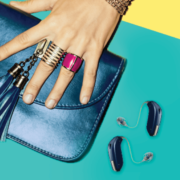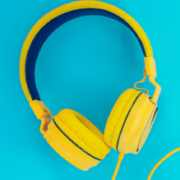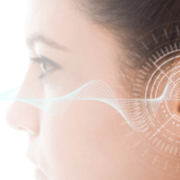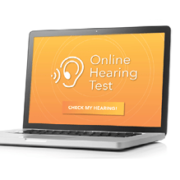Destigmatizing Hearing Loss: It Affects People of All Ages
Hearing Loss Affects People of All Ages
When you think about eyeglasses, what do you think of? Most likely your own pair or those of loved ones. If you’re more fashion-minded, you might even think about that funky pair you saw recently on one of your favorite celebrities. You definitely don’t think of old age.
But what about when you think of hearing aids? Probably a different story.
A PR Problem
More than 50% of Canadian adults have vision problems; some 40% have hearing impairment. Both eyeglasses and hearing aids correct a very common sense impairment — so why are eyeglasses a fashion statement, but it takes, on average, seven years for someone to even get their hearing tested after noticing a hearing loss?
Hearing Loss Affects All Age Groups
The idea that hearing loss is something that happens to people in their old age simply isn’t true. Significant numbers of people across all generations experience some degree of hearing loss.
Children
- 4 of every 1,000 Canadian babies are born with a detectable hearing loss
- About 1 in 11 Canadian 6- to 11-year-olds has some degree of hearing loss
- About 1 in 12 Canadian teens has some degree of hearing loss
Young adults
According to a World Health Organization report, 50 percent of millennials risk hearing loss because of damaging volumes via personal audio devices; 40 percent do so via noisy entertainment venues such as concerts.
Adults
- About 2 in 5 Canadians ages 20 to 79 have hearing loss
- 42 percent of Canadians ages 16 to 79 currently are or have been regularly exposed to dangerous noise levels at work
- 42 percent of Canadians ages 3 to 79 have experienced tinnitus (a ringing, pulsing, or buzzing only they can hear)
- About 90 percent of tinnitus cases have accompanying hearing loss
Service members
- 3 in 5 returning service members experience hearing loss
- Among both active and veteran service members, hearing loss and tinnitus are the most reported health issue
- 50 percent of all blast-induced injuries result in permanent hearing loss
- Hearing loss among service members has become a big enough problem that the Department of Defense spearheaded an interactive course that provides early and ongoing hearing loss-prevention training
Normalizing Hearing Loss
Clearly, hearing loss is even more prevalent than vision problems. And it leaves no age group untouched. But the stigma remains, such that only 1 in 5 people who could benefit from hearing technology actually uses it.
But there’s a growing online trend of people discussing their lives with hearing loss — many of them millennials or slightly older — in an attempt to remove the stigma of hearing loss and hearing aids.
- Living With Hearing Loss is written by Shari Eberts, who was recognized as a HearStrong Champion for her tireless work to change the stigma surrounding hearing loss.
- The Invisible Disability and Me is written by a woman with a cochlear implant who hopes to raise awareness of and support those who’ve experienced sudden sensorineural hearing loss.
- Cosmopolitan magazine’s brand connection to millennial women is so strong that it launched a Cosmo Millennial Advisory Board staffed with millennials who are experts in their fields; Cosmopolitan regularly features articles about life with hearing loss, covering topics from dating with hearing loss to becoming a NASA engineer despite having been born profoundly deaf.
- The Twitter page Normalize Hearing Loss is “on a mission to normalize hearing loss and hearing aids and other tech the way we’ve normalized glasses,” and encourages users to include @NormalizeHL or #NormalizeHearingLoss in their tweets.
Hearing Tech for Today’s Connected Culture
What’s more, the hearing technology of today is a far cry from the hearing aids of 50 years ago. The digital tech of today is sleek and discreet, minimizes background noise, improves speech clarity in complicated sound environments, and focuses on what’s in front of you rather than taking in and amplifying all sounds equally.
Plus, hearing devices are becoming as connected as everything else. You can stream audio wirelessly from your mobile device to your hearing aids, geotag the hearing aid settings for your favorite locations, even hear a phone call in both ears simultaneously — and control it all on the sly with a smartphone app!
Sources:
Labrie Y. Eye Care in the Private Sector: Innovation at the Service of Patients. Accessed March 12, 2019. Canadian Hearing Society. Facts and Figures. Accessed March 12, 2019. Statistics Canada. Health Fact Sheets: Hearing Loss of Canadians, 2012 to 2015. Hearing Loss Association of America. Hearing Loss Facts and Statistics. Accessed March 6, 2019.





 Proudly Canadian and Independently Owned and Operated
Proudly Canadian and Independently Owned and Operated 

